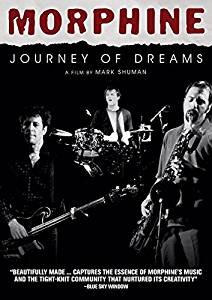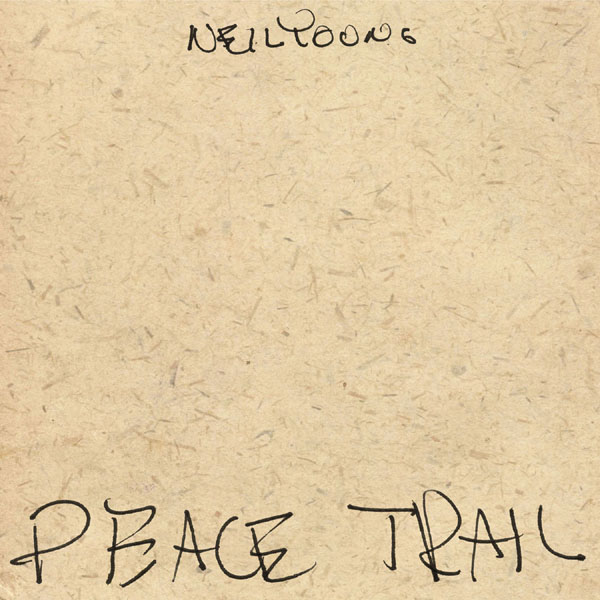MUSIC
1. Neil Young – Peace Trail
There is something both comforting and unsettling about Neil Young’s signature overdriven electric guitar sound, that pinched blast of feedback and echo, the rambling improvised melodies. It permeates your head and rattles your ribcage. Against the backdrop of his warm acoustic sound, it’s like watching a spectacular thunderstorm from your favorite chair by the fire. That’s a big part of the appeal of Peace Trail. It’s a hybrid of Crazy Horse’s ragged glory and the folksier sounds from Harvest or his earlier stuff. There’s even a little bit of Trans in there, in the Cher-like auto-tuned treatment of the background vocals on “My Pledge” and the second half of “My Robot,” a kind of goofy satire on technology.
It’s a mix lyrically, too. Young had never shied away from political messages, and there are plenty of them here, about the treatment of Native Americans in “Indian Giver,” organized workers fighting police in “John Oaks,” references to battles over water and land. But he’s always had a more oblique side. Young critiques xenophobia on “Terrorist Suicide Hang-Gliders” with imagery on par with “Last Trip to Tulsa.” “Terrorist suicide hang-gliders,” he sings, “In the sky above you can’t see/Hidden there in the darkness/Behind the reasons that you’re free.” Young can sometimes be painfully on the nose when he addresses politics, but here he is telling stories or writing in an impressionistic way, methods that let you feel what he’s trying to say as much as hear it. That approach tends to land better with me.
Young is ably accompanied by Jim Keltner (one of the best in the business, and his playing is subtle but crucial here) on drums and Paul Bushnell on bass. Everything else is all Neil. The acoustic guitar, the electric guitar (which so closely matches the acoustic parts in some cases it sounds like he may have split the signal and distorted one and kept the other clean), and the fuzzed-out harmonica. Simple, with some experimental tweaking here and there.
The best thing about following Young’s career is that he’s always tinkering, and he’ll always go wherever the ideas take him. This album was reportedly recorded over four days, and true to Young’s work ethic, it’s mostly first and second takes. None of it sounds terribly premeditated. It’s all straight from his head to your ears, and the next thing is probably already brewing in there somewhere. There are any number of sounds Neil Young could settle into comfortably and just sail into the sunset of his career. But as he says on the title track, “Ain’t taken my last hit yet/I know things are different now/I see the same old signs/But something new is growin’.”
“Peace Trail”
“My Pledge”
MUSIC DOCUMENTARY – DVD
 1. Morphine – Morphine:Journey of Dreams
1. Morphine – Morphine:Journey of Dreams
No one can match the cool of Morphine. No one ever has, and no one ever will. Mark Sandman on two-string bass and vocals, Dana Colley on baritone sax, and Jerome Deupree, and later Billy Conway, on drums. That low sound resonates in your head and your gut – you know what you’re hearing from the first note. It was as audacious as punk, but it didn’t snarl and scream. It seduced. It made you lean in. And it made you want to go out and be with other people who understood the groove. “We were into making people’s hips move,” says Conway in Morphine: Journey of Dreams. They were after something elemental, and they got it.
Journey of Dreams is a straightforward chronicling of Morphine’s history, starting with the band coming together around “rent parties” in a vibrant Boston music scene and ending with the aftermath of Sandman’s death in 1999, when he collapsed onstage following a massive heart attack, and how Dana Colley and Billy Conway picked up the pieces. It’s great to see footage of Sandman talking about music, combing through a massive collection of tapes to illustrate the inspirations for Morphine’s low rock sound or talking about developing a three-string guitar-bass hybrid. There’s a lot of great live footage, too, covering Morphine’s entire timeline. And the filmmakers definitely picked their shots well in terms of supporting interviews. It’s mostly the former band members and their inner circle, like manager Dab Klein and Sandman’s girlfriend Sabine. The three main interviews outside of that circle are Henry Rollins, Steve Berlin of Los Lobos, and Joe Strummer. You don’t need anything more to establish Morphine’s credentials as a vital band.
There’s a lot of romance in this story, and for anyone who was a fan when they first popped up, it’s exciting to hear that story told as a complete narrative. Colley recalls the band’s first trip to France, playing to an arena-sized crowd for a late-night show, and how they all stuck around to watch Morphine played until the sun came up. Former Morphine manager Deb Klein talks about the SXSW gig that really broke things open for them – opening up for Alejandro Escovedo. Man, what a show that must have been.
There’s a natural dramatic arc to the story. There were the lean times, when the band was touring with Good, it’s first album, and playing to tiny audiences. But everyone who heard them seemed to know the band was on its way to something bigger. They became a hit in the burgeoning alternative movement, and then had difficulties trying to stay true to their sound while maintaining commercial success. And then there’s the ultimate tragedy that was Sandman’s death. Journey of Dreams presents that moment as it should be presented, speaking with those who were closest to him – the band, his management, and his girlfriend at the time, Sabine. The loss is palpable. This isn’t a rock and roll story of a star who destroyed himself with drugs and excess. Sandman’s death is made that much more tragic by its randomness. He seemed healthy, he didn’t use drugs. He and Sabine were planning to hike Kilimanjaro in 2000. I was grateful for the short coda showing Colley, Conway, Sabine, and Klein figuring out how to move on and how Morphine and Sandman still fit into their lives.
What this story does have in common with other rock and roll tragedies is the idea that there was so much music left to be made. Rollins thinks the band would have remained vital, doing interesting soundtrack work and releasing new albums. “You know that they’re not done yet,” he says. “Life ends for them before they get to turn the corner and explore new possibilities.”
"Journey of Dreams" from Mark Shuman on Vimeo.
